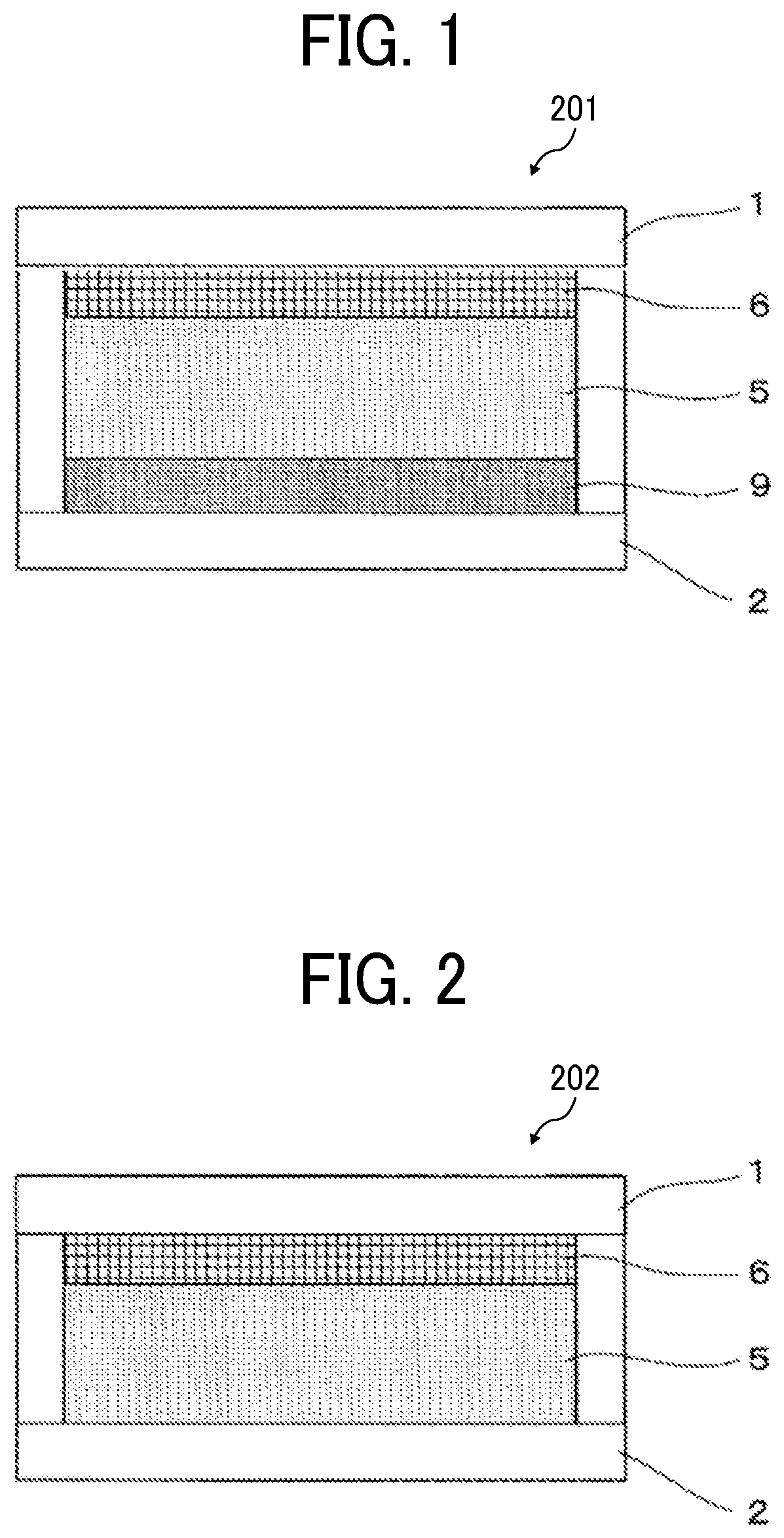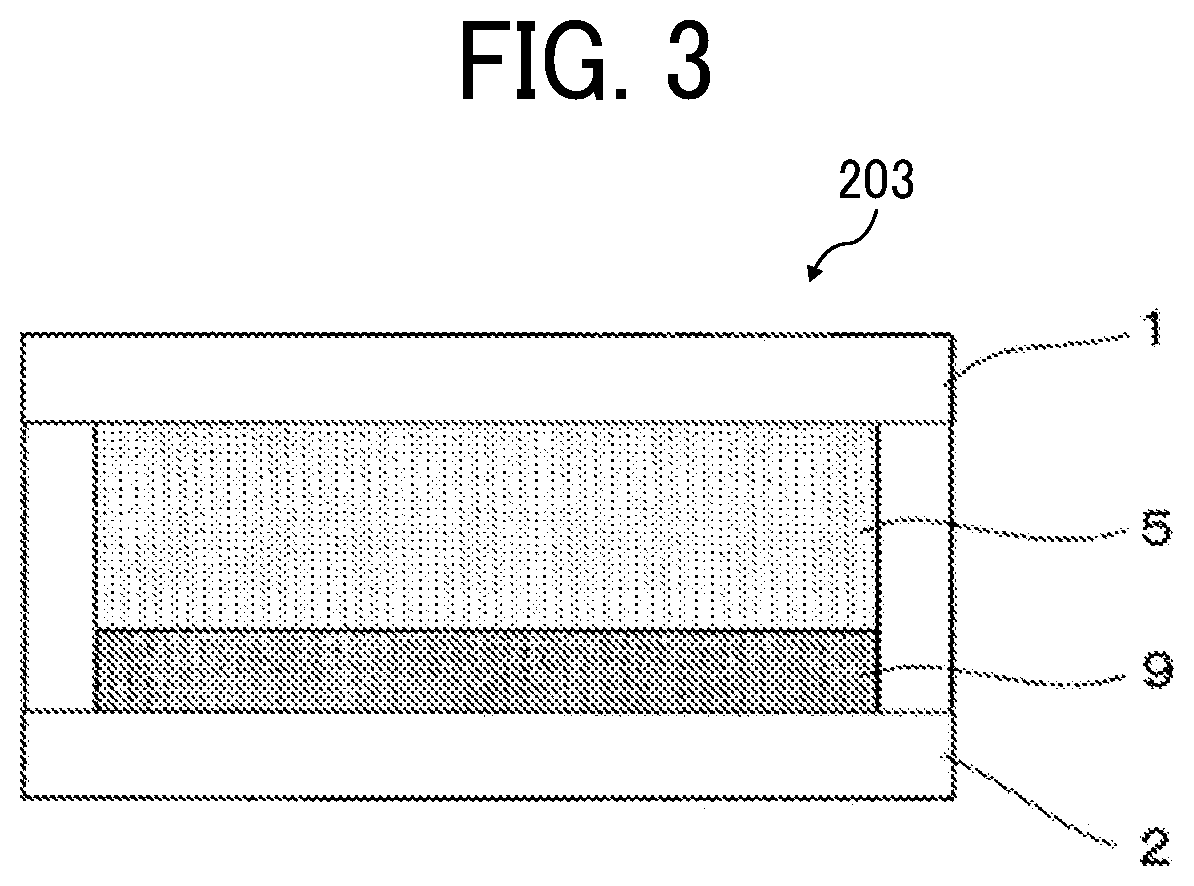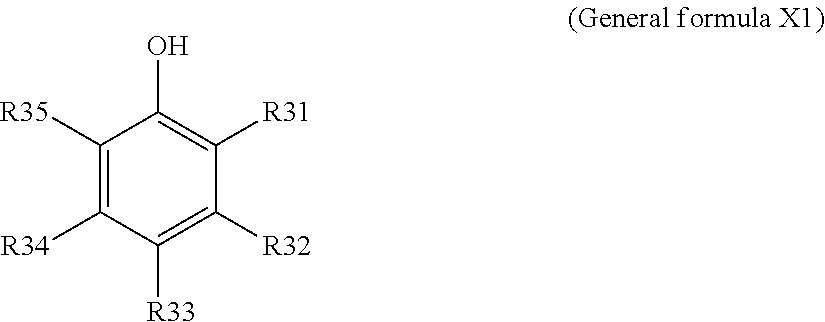Electrochromic element, and method for driving the same
a technology of electrochromic elements and methods, applied in static indicating devices, instruments, non-linear optics, etc., can solve the problems of color remaining and spoiling the reliability of ec elements, and achieve the effect of reducing the number of ec elements
- Summary
- Abstract
- Description
- Claims
- Application Information
AI Technical Summary
Benefits of technology
Problems solved by technology
Method used
Image
Examples
example 1
>
[0210]A solution having the composition described below was prepared in order to form an oxidizable electrochromic layer over a first electrode.
[Composition]
[0211]Oxidizable electrochromic compound: Compound A (50 parts by mass)
[0212]Ion conductive material: PEG400DA (obtained from Nippon Kayaku Co., Ltd.) (50 parts by mass)
[0213]Polymerization initiator: IRGACURE184 (obtained from BASF GmbH) (5 parts by mass)
[0214]Solvent: Methyl ethyl ketone (900 parts by mass)
[0215]An ITO glass substrate (40 mm×40 mm, with a thickness of 0.7 mm, and an ITO film thickness of about 100 nm) serving as a first electrode was coated with the obtained solution by a spin coating method. The obtained coating film was irradiated at 10 mW for 60 seconds using a UV irradiator (SPOT CURE, obtained from Ushio Inc.) and annealed at 60 degrees C. for 10 minutes, to form an oxidizable electrochromic layer having an average thickness of 1.3 micrometers.
>
[0216]An ITO glass substrate (40 mm×40 mm, with a thickness ...
examples 2 to 13
[0220]Electrochromic elements of Examples 2 to 13 were produced in the same manner as in Example 1, except that unlike in Example 1, the oxidizable substance in the electrolyte layer was changed to the compounds presented in Table 2 respectively.
example 14
>
[0231]A first electrode was spin-coated with a TFP dispersion liquid of an aqueous polyurethane resin and ATO nanoparticles (obtained from Mitsubishi Materials Corporation), and annealed at 120 degrees C. for 15 minutes, to form an anti-deterioration layer.
>
[0232]An ITO glass substrate (40 mm×40 mm, with a thickness of 0.7 mm, and an ITO film thickness of about 100 nm) serving as a second electrode was coated by a spin coating method with a titanium oxide nanoparticle dispersion liquid (product name: SP210, obtained from Showa Titanium Co., Ltd., with an average particle diameter of about 20 nm). Then, the resultant was annealed at 120 degrees C. for 15 minutes, to form a nanostructure semiconductor material formed of a titanium oxide particle film having a thickness of about 1.0 micrometers.
[0233]Next, the obtained titanium oxide particle film was coated by a spin coating method with a 2,2,3,3-tetrafluoropropanol (hereinafter, abbreviated as “TFP”) solution containing 1% by mass o...
PUM
 Login to View More
Login to View More Abstract
Description
Claims
Application Information
 Login to View More
Login to View More - R&D
- Intellectual Property
- Life Sciences
- Materials
- Tech Scout
- Unparalleled Data Quality
- Higher Quality Content
- 60% Fewer Hallucinations
Browse by: Latest US Patents, China's latest patents, Technical Efficacy Thesaurus, Application Domain, Technology Topic, Popular Technical Reports.
© 2025 PatSnap. All rights reserved.Legal|Privacy policy|Modern Slavery Act Transparency Statement|Sitemap|About US| Contact US: help@patsnap.com



